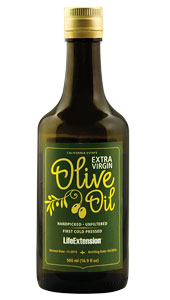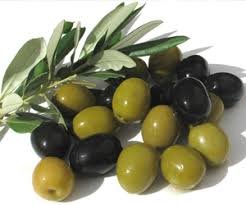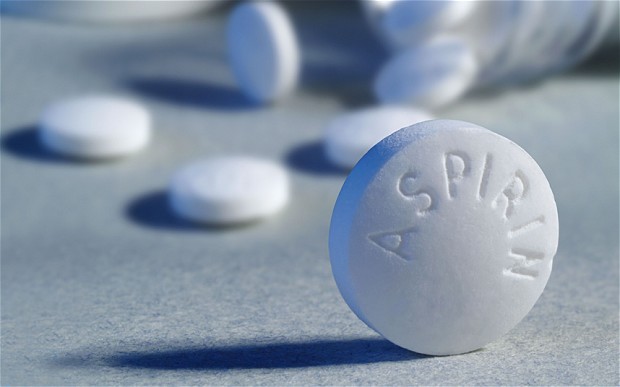|
Press The Start Button
Have Speakers Turned On
Allow Large Files Time To Download If Not Using Broadband or DSL
To Best Enjoy Streaming Video and Sound, Configure Windows Program for:
Real Player, Quick Time, and Windows Media Player

–

Aspirin may be looked upon as truly, a Miracle Drug. Here are a number of things it does:
- In Cancer and Psoriasis, Aspirin stops uncontrolled proliferations of the 'infected' cells.
- Stress and Shock is going to be a major part of our lives when Total Chaos Arrives. Aspirin protects the organism against many forms of the response to Stress and Shock....and, in the nervous system of the organism, corrects imbalances there brought on by the Shock and Stress.
- Aspirin protects the brain from degeneration from several forms of toxins!
- Aspirin is an antioxidant!
- ATP is elevated in neurons that are intact, with aspirin use. And also in mitochondria of the brain that are isolated, which is an effect occurring due to an increase in NADH chemicals in which respiration is necessary by the submitochondrial particles of brain tissues.
- Aspirin's effect on prostaglandin inhibition also has an effect opposite to other prostaglandin inhibitors.
- A very important effect aspirin has is to protect against the harmful results of prolactin, estrogen, cortisol, histamine, serotonin and ultraviolet, x-ray and gamma-ray radiation!
- Aspirin prevents the dread killer, cancer, and can even cause it to regress. Aspirin stops proliferation of cancer vascularly. And, it stops interleukin 6 and other inflammatory cell messangers, known as cytokines. The latter is a strong generator in cancer of the breast and liver. Also, it is an inhibitor of the cytokines that play a role in heart disease.
- The brain is protected with regular aspirin use, and it can increase learning. By its antioxidant properties, cataracts can be prevented. In diabetes, aspirin prevents protein from tying up with sugars (glycation).
— De Cristobal, et al., 2002
As given above, Aspirin is an antioxidant. This is very important, because, Pryor in Free Radicals In Biology, points out antioxidants are very important in protecting and/or helping in diminishing Radiation Damage!
Rancidity, or lipid peroxidation, is protected against with aspirin. ATP formation, the making of the energy currency of an organism in man and lower animals, is known as mitochondrial respiration. Cell division that becomes abnormal can be inhibited by aspirin. And, what does radiation damage do to a cell? It destroys the normal electrical function, such that rancidity occurs on polyunsaturated fats, generating autoxidation—a domino effect destroying more susceptible cells making up tissues and into organs. Aspirin promotes normal cellular reactions, including division of cells. Generally not known, it helps in learning and prevents injury of nerves from excitotoxicity, a process whereby nerves are so stimulated, they are excited to death!
Everyone has heard about inflammation. Aspirin inactivates the enzyme that generates prostaglandins.It is the second portion of aspirin (salicylic acid)—not the acetyl portion for the extremely important antiinflammatory response.
The prostaglandins are made by the cyclooxygenase (COX) enzymes. With what is happening throughout the world today, and the coming World–War III; The global financial crash; Extreme Earth Changes, and more, this is all Stress Generating!
When the going gets tough, as it will shortly, nitric oxide, serotonin, and chemical messengers between cells, the cytokines, are formed in excess and continue to wreak havoc instead of doing what they should do, then, drop to normal levels without causing more continued damage to you and allow repair to take place. Also, include in this array of dangerous chemicals out of control is the aromatase enzyme that makes estrogen; histamine is also made including the hormones induced by Stress from the adrenal glands; but, first, those of the pituitary gland. All of these are turned on when the threat or threats are present; but, have to be turned off when the threat is over.
Mitochondrial Respiration, the energy production, is the major basis for overcoming all threats. And this must be there in conservation for when threats come again. Thyroid Hormone, T3 is necessary for this. Selenium, Se–Methyl L–Selenocysteine, 200 mcg, is most helpful, in this form.
Aspirin keeps all these above reactions of Stress under control. And, combined with a little table sugar, controls the Stress Response considerably from Cortisol generation!
 Now, with all this unbelievable stress coming,there is another thing to get. Real Dark Green Olive Oil
because it has oleic acid in high amounts, and oleic acid goes to form a Mead Acid, which is extremely good for the Stress Response, as the Mead Acid is an antiinflammatory substance and some it acts on the Cannibinoid Receptor, commonly known as the 'Bliss Receptor' in the Brain! If one ate no unsaturated fats, the body would build large amounds of Mead Acids! These acids and their derivatives have a large number of reactions against the Stress Response. Now, with all this unbelievable stress coming,there is another thing to get. Real Dark Green Olive Oil
because it has oleic acid in high amounts, and oleic acid goes to form a Mead Acid, which is extremely good for the Stress Response, as the Mead Acid is an antiinflammatory substance and some it acts on the Cannibinoid Receptor, commonly known as the 'Bliss Receptor' in the Brain! If one ate no unsaturated fats, the body would build large amounds of Mead Acids! These acids and their derivatives have a large number of reactions against the Stress Response.
Most reading this document are totally unaware, especially those in the Medical Profession, that the so–called 'Essential Fatty Acids' are toxic universally and they suppress  the Mead Acids, as the PUFAs (Poly Unsaturated Fatty Acids) accumulate in the body. It has been shown that animals in the wild who live deficient of 'Essential' Fatty Acids, the Mead Acids are factors of necessity that keep their tissues stable. It probably has something to do with the positive electrical nature of a cell's regeneration.
Extra Virgin Olive Oil, the kind we're talking about in this document, helps with memory, as does Aspirin, which helps in learning!
the Mead Acids, as the PUFAs (Poly Unsaturated Fatty Acids) accumulate in the body. It has been shown that animals in the wild who live deficient of 'Essential' Fatty Acids, the Mead Acids are factors of necessity that keep their tissues stable. It probably has something to do with the positive electrical nature of a cell's regeneration.
Extra Virgin Olive Oil, the kind we're talking about in this document, helps with memory, as does Aspirin, which helps in learning!
The second portion of Aspirin, Salicylate, and other antiinflamatories, including antihistamines and muscle relaxants, act a substitute when the Mead Acid and its derivatives are absent. These then act as defensive substances for all the negative and toxic results of the PUFAs. This action explains how the hormone, estrogen, goes awry as it immitates PUFA's toxicity of those fats that are unstable.
Here's More About The 'Real' Stuff That You Do Not Know!
In The Phenolic Compounds of olive oil: structure, biological activity and beneficial effects on human health, Institute of Physiology and Human Nutrition, Faculty of Pharmacy, University of Palermo, Via Augusto Elia 3, 90 127, Palermo, Italy
Writes, Under: The Antioxidant Activity of The Poloyphenolic Compounds
The 'reactive oxygen species' (ROS), which are continuously formed as a result of normal metabolic processes, can oxidise and damage cellular macromolecules, possibly leading to the development of degenerative diseases (for example, atherosclerosis, cancer, diabetes, rheumastoid arthritis and inflammatory diseases). Exogenous antioxidants are important because they have a twofold function, preventing food oxidation – and in particular lipid oxidation [Commentary By Kong: That's Rancidity, Rancid Fat In Your Body!] – and at the same time increasing the amount of antioxidant agents present in the organism, protecting against degenerative diseases. The most important dietary antioxidants are certain vitamins (ascorbic acid, tocopherols, carotenes) and phenolic compounds, which are present in various foods of vegetable origin characteristic of the Mediterran diet, such as olivera (Berra et al. 1995).
[ Commentary–2 By Kong: Folks, Keep This Question In Mind, 'They Discovered Something Really Big, But probably Not Knowing Radiation Physics, They Did Not Recognize This Great Discovery, That We Will Tell What It Is, Shortly, That Your Are Reading Right Now! ]
Phenolic compounds can act as antioxidants in various ways. In oxidative systems using transition metals such as Cu and Fe, they can chelate metallic ions, which can prevent their involvement in Fenton reactions that can generate high concentrations of hydroxyl radicals (Halliwell & Gutterige, 1990; Halliwell et al. 1995). However, the most important antioxidant activity is related to the free radical-scavenging ability, by breaking the chain of reactions triggered by free radicals. The antioxidant properties of the o-diphenols are associated with their ability to form intramolecular hydrogen bonds between the hydroxyl group and the phenoxylic radicals (Visioli & Galli, 1998b) .... As similar studies on the flavonoids have already shown, the degree of antioxidant activity is correlated with the number of hydroxyl groups (Rice-Evans et al. 1996; Cao et al. 1997).
The number of –OH groups and their positions on the ring are important for both flavonoids and phenols. From the study of the resonance structures formed during the oxidation processes, it can be observed that the ortho- and para-substitutes of the radicals are more stable than the meta-substitute (Finotti & Di Majo, 2003). In particular, ortho-diphenolic substitution gives high antioxidant ability, while a single hydroxyl substitution, as in tyrosol, does not confer any activity, since tyrosol does not protect LDL from chemically induced oxidation.
Although olive oil contains a relatively low concentration of a-tocopherol, it is known to be highly resistant to oxidative degradation. This is due, in part, to the relatively low content of PUFA and also to the high concentration of polyphenolic antioxidants, particularly in extra-virgin olive oil.
The antioxidant activity of olive oil phenolic compounds, and in particular of oleuropein and its byproduct hydroxytyrosol, has been studied in many experimental models: with the use of transition metals; the Phenolic compounds of olive oil chemically induced oxidation of LDL; ROS formation, forexample the radicals superoxide and trichlormethylperoxylic, and hypochlorous acid (Aeschbach et al. 1994;Salami et al. 1995; Visioli et al. 1995a, 1998; Aruoma et al.1998).
By estimating the antioxidant activity of these polyphenolic compounds on the basis of their ability to inhibit the formation of peroxides, it has been shown that hydroxytyrosol and caffeic and protocatechuic acids have a higher protective activity (Papadopoulos & Boskou, 1991).
The antioxidant activity of oleuropein and hydroxytyrosol has also been demonstrated in cellular models and animals (Manna et al. 1997; Speroni et al. 1998). Some polyphenols can contribute to the regeneration of vitamin E, as has been demonstrated by treating human lipoproteins in vitro with peroxides. In a recent study, the antioxidant activity of a-tocopherol and phenolic extracts from olives and olive oil was compared over time. It was demonstrated that in the first 15 min the scavenger activity of a-tocopherol was higher but soon terminated. The extract from stoned olives and oil contained compounds that continued to reduce the concentration of these radicals more slowly; when on the other hand the reaction time was delayed to 60 min, all the extracts of the olives were much more active than a-tocopherol. On day 6 the extracts of the olives and the oil continued to be more effective than a-tocopherol (Keceli & Gordon, 2001).
The biological activity of phenolic compounds of olive oil is not limited to their antioxidant ability but extends to their interaction with important enzymic systems. In particular, it has been found out that olive oil phenols: inhibit platelet aggregation; reduce pro-inflammatory molecule formation such as thromboxane B2 and leucotriene B4; inhibit the use of oxygen in human neutrophils; increase NO production by the macrophages of rats exposed to endotoxin – they therefore act by up regulating the immune system.
Other biological actions of phenolic compounds have been discovered that can be important for their effects on human health. For example, caffeic acid could have cytoprotective effects on endothelial cells, correlated not only with its action as an antioxidant agent but also with its ability to block the increase of the concentration of intracellular Ca2þ in response to lipoprotein oxidation (Vieira et al. 1998). The ability of polyphenolic compounds to react with metal ions could make them pro-oxidant. It has in fact been widely observed that caffeic acid, a simple polyphenol with an ortho-diphenolic structure, can have pro-oxidant activity on LDL oxidation induced by Cu2þ (Yamanaka et al. 1997). However, this pro-oxidant activity has been found only in the propagation phase of oxidation, and not in the initiation phase, in which caffeic acid inhibits lipoprotein oxidation, as has been found in previous studies (Laranjinha et al. 1994; Nardini et al. 1995).
The effects of the antioxidant activity of olive oil polyphenols on the integrity and function of the cells have been studied in erythrocytes and intestinal cells (Caco-2). The capacity of polyphenols to prevent damage in these cells was verified when they were exposed to oxidative stress, as in treatment with H2O2. Human erythrocytes were chosen because they are the cells most exposed to oxidative risk, since their specific role is to carry oxygen.
The main target of H2O2 is Hb, which is oxidised to methaemoglobin. Exposure of erythrocytes to H2O2 also causes lipid peroxidation, and alterations in proteins, for example the formation of carbonyl dimers. As a consequence of this oxidative damage, the shape of the erythrocytes changes, causing haemolysis. The spontaneous oxidation of Hb produces superoxide anion radicals that cause the dismutation of H2O2. In the presence of reduced metal ions, especially Fe, these compounds form the highly reactive hydroxyl radical that can damage the cellular membrane, with consequent haemolysis (Sadrzadeh et al. 1984; van Dyke & Saltman, 1996).
Some studies on isolated erythrocyte membranes have demonstrated that the ATP dependent ion transport (such as amino acid transport) is considerably compromised by oxidative damage (Rohn et al. 1993). Under physiological conditions, ROS are quickly removed by both enzymic and non-enzymic systems; however, if ROS production is excessive, or if antioxidant defence is impaired, serious oxidative damage can occur, to both the plasma membrane and the cytosol, which finally leads to haemolysis. Erythrocytes pre-treated with phenols extracted from extra-virgin olive oil show significantly less lipid oxidation and haemolysis after treatment with H2O2.
In erythrocytes pre-treated with H2O2 and incubated in the presence of [3H]methionine or [3H]leucine, there is a marked reduction in the absorption of both the amino acids compared with control erythrocytes. 3,4-Dihydroxyphenyl-ethanol, or hydroxytyrosol, prevents the alteration of amino acid transport by H2O2 in intact erythrocytes (Manna et al. 1999). Similarly in intestinal tumour cells (Caco-2) treated with H2O2, pre-treatment with olive oil polyphenols exerts a strong antioxidant effect.
H2O2 induces a clear increase in the intracellular concentration of malonyldialdehyde and the paracellular transport of inulin, respectively indicating the occurrence of lipid peroxidation and changes in cellular permeability. Preincubation of the Caco-2 cells with hydroxytyrosol totally prevents the alterations induced by H2O2 (Manna et al. 1999).
Phenolic Components As Compounds With Anti–inflammatory Activity
Lipid radicals are also produced during reactions involved in the metabolism of arachidonic acid, during the sysnthesis of the eicosanoids by the action of the lipo–oxygenase and cyclo–oxygenase...[These latter two are inflammatory Substances!]
During these reactions, the radicals that are generated are partially inactivated by glutathione peroxidase (Eling et al. 1986; Mirochnitchenko et al. 2000). Some studies hypothesizse an inhibitory activity on cyclo–oxygenase (Petroni et al. 1995; de La Pueta et al. 2000 and lipo–oxygenase by olive oil phenolic compounds (Kohyama et al. 1997; DeLa Puerta et al. 1999; Martinez–Dominguez et al. 2001).
Considering the functions of the prostaglandins and leucotrienes, the results of these studies have important implication for the genesis of the inflammatory response and for atherosclerosis. In one these studies, the effects of hydroxytyrosol and of the polyphenols extracted from waste waters inhibited in vitro platelet aggregation induced by collagen and thromboxane B2 production.
The effectiveness of hydroxytyrosol (One of the Main Ingredients in the 'Real Stuff; the other is Oleuropein. These two give real extra–virgin olive oil its bitter, pungent taste) in inhibition of the aggregation induced by collagen is similar to that of a drug that is well known for its powerful activity in platelet anti–aggregation and cyclo–oxygenase inhibition (Petroni et al. 1995)
What Is It The Researchers Discovered About Olive Oil In Its Relation To Radiation? Olive Oil, the kind we're talking about, Inhibits; or, blocks Radiation Damage! It does this by blocking the damage to the cells' free fatty acids that are polyunsaturated! How Is This? Because Olive Oil, the 'Right Stuff' is a powerful antioxidant, like Aspirin!
It would be best to start immediately on eating the foods that contain real saturated fat, such as Tropical oils (Unrefined Coconut Oil, Palm Kernel Oil, and real Butter). Using aspirin as a prevention, as well as for purposes of healing, will be advantageous when the total Chaos, spoken of above, arrives in its various forms. Aspirin will prevent heart disease, including lung disease too! It can inhibit brain dysfunction, such as degeneration, and cancer.
Aspirin not only facilitates in cancer protection, but many of its sequelae; such as, cachexia—wasting of tissue, strokes and immunosuppression.
Many take Opiates; but they increase histamine and this works with substances from a tumor to inhibit the body's own immune system protection and enhances the growth of tumors! This is a Catch–22 Situation: Giving Opiates minimally to control cancer pain; yet, it does those other things negatively to the cancerous body!
Niacinamide, T3, Magnesium are substances that are protective, in addition to aspirin for degenerative diseases of nerve tissue, such as Alzheimer's disease, and Parkinson's disease. Glutamate induced excitotoxicity, rancidity, and ande dopamine toxicity, is inhibited or protected by Aspirin. And, as given earlier, facilitates mitochondria respiration as does the chemicals just mention.
When caught without hospitals, tent hospitals with this coming Chastisement, carbon dioxide, as generated from 1 teaspoon of sodium bicarbonate in 16 ounces of pure water, with 1 teaspoon of cain sugar added, ingesting about a tablespoon several times daily, are very important in multiple organ failure, which will be caused by the Chaos coming, that generates through profound shock (low–blood pressure), infections, hard or blunt trauma, and Severe Stress, as the kind that most have never seen, finds that aspirin is an excellent modality. However, for helping in multiple organ failure, glucose hypertonicity, sodium and carbon dioxide will be more suitable.
Many reading this have been caught up in the dogma espoused by pharmaceutical companies, that aspirin make you Bleed! It order to see other of their latest produces, they performed experments designed to demonize aspirin by shown a number of negative things it did, one just stated.
Reading this, you're going to find, 'Hell Ain't Half Full!' Dr. Ray Peat in his newsletter of 2006 writes:
Although the animals studies that showed stomach damage from aspirin often used single doses equivalent to 10 or 100 aspirin tablets, the slight irritation produced by a normal dose of aspirin can be minimized by dissolving the aspirin in water. The stomach develops a tolerance for aspirin over a period of a few days, allowing the dose to be increase if necessary. And both aspirin and salicylic acid can be absorbed through the skin, so rheu\matic problems have been treated by add the drugh to bath water.
The unsaturated (n–6 and n–3) fats that accumulate in our tissues, instead of being part of the system for reestablishing order and stability, tend to amplify the instability that is triggered by excitation, by estrogen, or by external stresses.
I think it's important that we don't allow the drug publicists to obscure the broad importance of substances such as aspirin, vitamin E, progesterone, and thyroid. For 60 years, a myth that was created to sell estrogen has harmed both science ande the health of many people.

Many women learned, who had bought into the myth about aspirin, discovered It reduced excessive menstrual monthly discharge (bleeding).
References:As Given By Dr. Ray Peat, Endocrine Physiologist
Free Radic Biol Med 2000 Dec 1;29(11):1135-42. Synergistic inhibition of cyclooxygenase-2 expression by vitamin E and aspirin. Abate A, Yang G, Dennery PA, Oberle S, Schroder H.
Proc Natl Acad Sci U S A 1995 Aug 15;92(17):7926-30. The mode of action of aspirin-like drugs: effect on inducible nitric oxide synthase. Amin AR, Vyas P, Attur M, Leszczynska-Piziak J, Patel IR, Weissmann G, Abramson SB. "These studies indicate that the inhibition of iNOS expression and function represents another mechanism of action for aspirin, if not for all aspirin-like drugs."
Obstet Gynecol 2001 Mar;97(3):423-7. Aspirin effects on endometrial cancer cell growth. Arango HA, Icely S, Roberts WS, Cavanagh D, Becker JL.
J Neurochem 2001 Mar;76(6):1895-904. Neuroprotective effects of non-steroidal anti-inflammatory drugs by direct scavenging of nitric oxide radicals. Asanuma M, Nishibayashi-Asanuma S, Miyazaki I, Kohno M, Ogawa N.
J Neurochem 1998 Oct;71(4):1635-42. Aspirin and salicylate protect against MPTP-induced dopamine depletion in mice. Aubin N, Curet O, Deffois A, Carter C.
Psychopharmacology (Berl) 1998 Aug;138(3-4):369-74. The influence of acetylsalicylic acid on cognitive processing: an event-related potentials study. Austermann M, Grotemeyer KH, Evers S, Rodding D, Husstedt IW.
Brain Res 1999 Oct 2; 843(1-2): 118-29. Cyclooxygenase-2 selective inhibitors aggravate kainic acid induced seizure and neuronal cell death in the hippocampus. Baik EJ, Kim EJ, Lee SH, Moon C.
Cancer Lett 1978 Jun;4(6):333-42. Inflammatory, tumor initiating and promoting activities of polycyclic aromatic hydrocarbons and diterpene esters in mouse skin as compared with their prostaglandin releasing potency in vitro. Brune K, Kalin H, Schmidt R, Hecker E.
J Neurooncol 2000;46(3):215-29. Acetaminophen selectively reduces glioma cell growth and increases radiosensitivity in culture. Casper D, Lekhraj R, Yaparpalvi US, Pidel A, Jaggernauth WA, Werner P, Tribius S, Rowe JD, LaSala PA "Glioblastoma multiforme (GBM) is a highly lethal brain cancer. Using cultures of rodent and human malignant glioma cell lines, we demonstrated that millimolar concentrations of acetylsalicylate, acetaminophen, and ibuprofen all significantly reduce cell numbers after several days of culture."
Neurosci Lett 2000 Aug 11;289(3):201-4. Ibuprofen protects dopaminergic neurons against glutamate toxicity in vitro. Casper D, Yaparpalvi U, Rempel N, Werner P. "We examined the effects of aspirin, acetaminophen, and ibuprofen on cultured primary rat embryonic neurons from mesencephalon, the area primarily affected in Parkinson's disease. We evaluated whether these drugs protect dopaminergic neurons against excitotoxicity. All three NSAIDs significantly attenuated the decrease in dopamine uptake caused by glutamate, indicating preservation of neuronal integrity."
Lipids 1996 Aug;31(8):829-37. Effect of dietary n-9 eicosatrienoic acid on the fatty acid composition of plasma lipid fractions and tissue phospholipids. Cleland LG, Neumann MA, Gibson RA, Hamazaki T, Akimoto K, James MJ "Dietary enrichment with ETrA warrants further investigation for possible beneficial effects in models of inflammation and autoimmunity, as well as in other conditions in which mediators derived from n-6 fatty acids can affect homeostasis adversely."
Can J Ophthalmol 1981 Jul;16(3):113-8. Senile cataracts: evidence for acceleration by diabetes and deceleration by salicylate. Cotlier E.
Int Ophthalmol 1981 May;3(3):173-7. Aspirin effect on cataract formation in patients with rheumatoid arthritis alone or combined with diabetes. Cotlier E. "The effects of aspirin on cataract formation may result from 1) lowering of plasma tryptophan levels and increased excretion of tryptophan metabolites, 2) inhibition of aldose reductase and sorbitol formation in the diabetic lens, 3) inhibition of tryptophan or kynurenine binding to lens protein."
Arterioscler Thromb Vasc Biol 2001 Feb;21(2):255-61. Tamoxifen and cardiac risk factors in healthy women: Suggestion of an anti-inflammatory effect. Cushman M, Costantino JP, Tracy RP, Song K, Buckley L, Roberts JD, Krag DN.
Med Sci Sports Exerc 2001 Dec;33(12):2029-35. Acetylsalicylic acid inhibits the pituitary response to exercise-related stress in humans. Di Luigi L, Guidetti L, Romanelli F, Baldari C, Conte D.
Ann Med 2000 Dec;32 Suppl 1:21-6. Cyclo-oxygenase products and atherothrombosis. FitzGerald GA, Austin S, Egan K, Cheng Y, Pratico D.
Acta Diabetol Lat 1981;18(1):27-36. Effects of acetylsalicylic acid on plasma glucose, free fatty acid, betahydroxybutyrate, glucagon and C-peptide responses to salbutamol in insulin-dependent diabetic subjects. Giugliano D, Passariello N, Torella R, Cerciello T, Varricchio M, Sgambato S.
J Reprod Fertil 1994 Aug;101(3):523-9. Relationships among GnRH, substance P, prostaglandins, sex steroids and aromatase activity in the brain of the male lizard Podarcis sicula sicula during reproduction. Gobbetti A, Zerani M, Di Fiore MM, Botte V "Acetylsalicylic acid decreased PGF2 alpha, oestradiol and aromatase activity, but increased the amount of androgens released."
Natl Med J India 1998 Jan-Feb;11(1):14-7. Aspirin: a neuroprotective agent at high doses? Gomes I.
Radiat Res 1991 Sep;127(3):317-24. Effects of some nonsteroidal anti-inflammatory agents on experimental radiation pneumonitis. Gross NJ, Holloway NO, Narine KR.
Micron 2001 Apr;32(3):307-15. Collagen as a model system to investigate the use of aspirin as an inhibitor of protein glycation and crosslinking. Hadley J, Malik N, Meek K.
J Pharmacol Exp Ther 1981 Aug;218(2):464-9. Protective effects of aspirin in endotoxic shock. Halushka PV, Wise WC, Cook JA.
J Pharmacol Exp Ther 2000 May; 293(2):417-25. Cyclooxygenase-2 contributes to N-methyl-D-aspartate-mediated neuronal cell death in primary cortical cell culture. Hewett SJ, Uliasz TF, Vidwans AS, Hewett JA.
Med Hypotheses 1999 Apr;52(4):291-2. Genetic induction and upregulation of cyclooxygenase (COX) and aromatase (CYP19): an extension of the dietary fat hypothesis of breast cancer. Harris RE, Robertson FM, Abou-Issa HM, Farrar WB, Brueggemeier R A novel model of mammary carcinogenesis is proposed involving sequential induction and upregulation of cyclooxygenase and aromatase genes by essential fatty acids prominent in the US diet.
J Clin Endocrinol Metab 2001 Sep; 86(9):4216-22. Differential effects of E and droloxifene on C-reactive protein and other markers of inflammation in healthy postmenopausal women. Herrington DM, Brosnihan KB, Pusser BE, Seely EW, Ridker PM, Rifai N, MacLean DB. "E treatment resulted in 65.8% higher levels of C-reactive protein (P = 0.0002) and 48.1% higher levels of IL-6...." "These data provide additional evidence of a proinflammatory effect of E that may have adverse cardiovascular consequences."
J Natl Cancer Inst 1998 Mar 18;90(6):455-60. Expression of cyclooxygenase-1 and cyclooxygenase-2 in human breast cancer. Hwang D, Scollard D, Byrne J, Levine E "Our results suggest that overexpression of COX may not be unique to colon cancer and may be a feature common to other epithelial tumors."
Ginekol Pol 1999 Mar;70(3):126-34. [Evaluation of the effectiveness of a low-dose aspirin in the treatment of intrauterine growth retardation (IUGR)]. Kalinka J, Sieroszewski P, Hanke W, Laudanski T, Suzin J.
J Cardiovasc Pharmacol 1995 Feb;25(2):273-81. Inhibitory effects of aspirin on coronary hyperreactivity to autacoids after arterial balloon injury in miniature pigs. Kuga T, Ohara Y, Shimokawa H, Ibayashi S, Tomoike H, Takeshita A. "Coronary vasoconstriction induced by histamine and serotonin were examined angiographically before, 1 h, 1 week, and 1 month after balloon injury in 29 hypercholesterolemic miniature pigs." "Hyperconstriction induced by the autacoids 1 h after injury were significantly less in groups B and C than in group A (p < 0.01). Hyperconstriction induced by autacoids 1 week after injury were significantly less in group B than in group A (p < 0.01) and were significantly less in group C than in group A (p < 0.01) or group B (p < 0.05)."
Proc Soc Exp Biol Med 1975 Feb;148(2):329-32. Correlation of anti-inflammatory activity with inhibition of prostaglandin synthesis activity of nonsteroidal anti-estrogens and estrogens (38532). Lerner EJ, Carminati P, Schiatti P.
Proc Soc Exp Biol Med 1985 Feb;178(2):250-3. Salicylic acid blocks indomethacin-induced cyclooxygenase inhibition and lesion formation in rat gastric mucosa. Ligumsky M, Guth PH, Elashoff J, Kauffman GL Jr, Hansen D, Paulsen G. "Salicylic acid has been shown to decrease gastric mucosal lesions induced by indomethacin in the rat."
Z Naturforsch [C] 2001 May-Jun; 56(5-6):455-63. Constant expression of cyclooxygenase-2 gene in prostate and the lower urinary tract of estrogen-treated male rats. Luo C, Strauss L, Ristimaki A, Streng T, Santti R.
Neuropharmacology 2000 Apr 27;39(7):1309-18. Mechanisms of the neuroprotective effect of aspirin after oxygen and glucose deprivation in rat forebrain slices. Moro MA, De Alba J, Cardenas A, De Cristobal J, Leza JC, Lizasoain I, Diaz-Guerra MJ, Bosca L, Lorenzo P "Apart from its preventive actions against stroke due to its antithrombotic properties, recent data in the literature suggest that high concentrations of ASA also exert direct neuroprotective effects." "We have found that ASA inhibits neuronal damage at concentrations lower than those previously reported (0.1-0.5 mM), and that these effects correlate with the inhibition of excitatory amino acid release, of NF-kappaB translocation to the nucleus and iNOS expression caused by ASA." "Our results also show that the effects of ASA are independent of COX inhibition. Taken together, our present findings show that ASA is neuroprotective in an in vitro model of brain ischaemia at doses close to those recommended for its antithrombotic effects."
Pediatrics 1987 Nov;80(5):638-42. A catch in the Reye. Orlowski JP, Gillis J, Kilham HA.
Prostaglandins Leukot Med 1982 Jul;9(1):109-15. Effect of acetaminophen and salicylate on aspirin-induced inhibition of human platelet cyclo-oxygenase. Rao GH, Reddy KR, White JG. "Recent studies have shown that salicylic acid, a metabolite of aspirin, effectively competes for the same site on the platelet cyclo-oxygenase enzyme."
Stroke 1997 Oct;28(10):2006-11. Acetylsalicylic acid increases tolerance against hypoxic and chemical hypoxia. Riepe MW, Kasischke K, Raupach A.
Cancer Res 1998 Dec 1;58(23):5354-60. Prevention of NNK-induced lung tumorigenesis in A/J mice by acetylsalicylic acid and NS-398. Rioux N, Castonguay A.
J Endocrinol 1989 Jun;121(3):513-9. Indomethacin inhibits the effects of oestrogen in the anterior pituitary gland of the rat. Rosental DG, Machiavelli GA, Chernavsky AC, Speziale NS, Burdman JA.
Int J Cancer 2001 Aug 15;93(4):497-506. Cyclooxygenase inhibitors retard murine mammary tumor progression by reducing tumor cell migration, invasiveness and angiogenesis. Rozic JG, Chakraborty C, Lala PK.
Res Commun Mol Pathol Pharmacol 1998 Sep;101(3):259-68. Protective ability of acetylsalicylic acid (aspirin) to scavenge radiation induced free radicals in J774A.1 macrophage cells. Saini T, Bagchi M, Bagchi D, Jaeger S, Hosoyama S, Stohs SJ.
Mol Cell Biochem 1999 Sep;199(1-2):93-102. Antioxidant properties of aspirin: characterization of the ability of aspirin to inhibit silica-induced lipid peroxidation, DNA damage, NF-kappaB activation, and TNF-alpha production. Shi X, Ding M, Dong Z, Chen F, Ye J, Wang S, Leonard SS, Castranova V, Vallyathan V.
J Physiol Paris 2001 Jan-Dec;95(1-6):51-7. Protection by aspirin of indomethacin-induced small intestinal damage in rats: mediation by salicylic acid. Takeuchi K, Hase S, Mizoguchi H, Komoike Y, Tanaka A. "Most of non-steroidal anti-inflammatory drugs (NSAIDs) except aspirin (ASA) produce intestinal damage in rats." "ASA did not provoke any damage, despite inhibiting (prostaglandin) PG production, and prevented the occurrence of intestinal lesions induced by indomethacin, in a dose-related manner."
FASEB J 2001 Oct;15(12):2057-72. Cyclooxygenase-independent actions of cyclooxygenase inhibitors. Tegeder I, Pfeilschifter J, Geisslinger G.
J Indian Med Assoc 1997 Feb;95(2):43-4, 47. Role of low dose aspirin in prevention of pregnancy induced hypertension. Tewari S, Kaushish R, Sharma S, Gulati N.
J Chromatogr B Biomed Appl 1995 Jul 21;669(2):404-7. Aspirin inhibits collagen-induced platelet serotonin release, as measured by microbore high-performance liquid chromatography with electrochemical detection. Tsai TH, Tsai WJ, Chen CF.
Clin Exp Immunol 1991 Nov;86(2):315-21. Piroxicam, indomethacin and aspirin action on a murine fibrosarcoma. Effects on tumour-associated and peritoneal macrophages. Valdez JC, Perdigon G. "We also studied the effect on tumour development of three inhibitors of prostaglandin synthesis: indomethacin, piroxicam and aspirin. Intraperitoneal administration of these drugs during 8 d was followed by the regression of palpable tumours. Indomethacin (90 mg/d) induced 45% regression, while with piroxicam (two 400 mg/d doses and six 200 mg/d doses) and aspirin (1 mg/d) 32% and 30% regressions, respectively, were observed. The growth rate of nonregressing tumours, which had reached different volumes by the end of the treatment, was delayed to a similar extent by the three anti-inflammatory non-steroidal drugs (NSAID)."
Int J Radiat Biol 1995 May;67(5):587-96. Amelioration of radiation nephropathy by acetylsalicylic acid. Verheij M, Stewart FA, Oussoren Y, Weening JJ, Dewit L.
Semin Perinatol 1986 Oct;10(4):334-55. The role of arachidonic acid metabolites in preeclampsia. Walsh SW, Parisi VM.
Proc Natl Acad Sci U S A 1999 Apr 27;96(9):5292-7. Suppression of inducible cyclooxygenase 2 gene transcription by aspirin and sodium salicylate. Xu XM, Sansores-Garcia L, Chen XM, Matijevic-Aleksic N, Du M, Wu KK. "Aspirin and sodium salicylate at therapeutic concentrations equipotently blocked COX-2 mRNA and protein levels induced by interleukin-1beta and phorbol 12-myristate 13-acetate."
Hum Reprod 1994 Oct;9(10):1954-7. The benefits of low-dose aspirin therapy in women with impaired uterine perfusion during assisted conception. Wada I, Hsu CC, Williams G, Macnamee MC, Brinsden PR. "Higher pregnancy rates (47 versus 17%) were achieved in those taking aspirin from day 1 of HRT." "The addition of low-dose aspirin to a standard HRT protocol in women with impaired uterine perfusion is associated with improved blood flow and satisfactory pregnancy rates."
J Ethnopharmacol 1991 Sep;34(2-3):215-9. Radiation-protective and platelet aggregation inhibitory effects of five traditional Chinese drugs and acetylsalicylic acid following high-dose gamma-irradiation. Wang HF, Li XD, Chen YM, Yuan LB, Foye WO.
Fertil Steril 1997 Nov;68(5):927-30. Low-dose aspirin for oocyte donation recipients with a thin endometrium: prospective, randomized study. Weckstein LN, Jacobson A, Galen D, Hampton K, Hammel J. "Low-dose aspirin therapy improves implantation rates in oocyte donation recipients with a thin endometrium."
Dermatologica 1978;156(2):89-96. Effect of topical salicylic acid on animal epidermopoiesis. Weirich EG, Longauer JK, Kirkwood AH. In contrast to its antihyperplastic effect on pathological proliferation of the epidermis, salicylic acid promotes epidermopoiesis in the normal guinea pig skin. After the application of 1% w/w salicylic acid in acetone-ethanol for 4 weeks, the thickness of the surface epithelium was increased by 40% and that of the deep epithelium by 19%. The mitotic index rose by 17%.
Arch Exp Veterinarmed 1981;35(3):465-70. [Control of implantation in rats and sows by peroral administration of prostaglandin synthetase inhibitors. 2. Effects of prostaglandin F2 alpha, progesterone/estrone, and acetylsalicylic acid on implantation and various biochemical parameters of amniotic fluid in the rat] Wollenhaupt K, Steger H. "The highest number of normally developed (97 per cent) and the lowest number of degenerated foetuses (three per cent) were recorded following acetylsalicylic acid treatment, as compared to the control group (91 and nine per cent)."
Biomed Pharmacother 1999 Aug;53(7):315-8. Aspirin induced apoptosis in gastric cancer cells. Wong BC, Zhu GH, Lam SK.
Scand J Immunol 2000 Oct;52(4):393-400. Tamoxifen decreases renal inflammation and alleviates disease severity in autoimmune NZB/W F1 mice. Wu WM, Lin BF, Su YC, Suen JL, Chiang BL. "It has been documented that sex hormone may play a role in the pathogenesis of murine lupus."
Science 2001 Aug 31;293(5535):1673-7. Reversal of obesity- and diet-induced insulin resistance with salicylates or targeted disruption of Ikkbeta. Yuan M, Konstantopoulos N, Lee J, Hansen L, Li ZW, Karin M, Shoelson SE.

These Are In Our Future:



... To Be Continued ...
|
In accordance with Title 17 U.S.C. Section 107, any copyrighted work in this message is distributed under fair use without profit or payment for non-profit research and educational purposes only. [Reference:Cornell Law School]
In An UpComing Issue:
Something You Need To Know For What's Coming
Kong Sez:
ChemicalBiological.net uses Graphics, Videos, Audios, and other devices to communicate facts. As time nears to in America and the world, ChemBio Updates will be sent out several times a week, either in e-mail format or as a hot link to its WebSite, as information warrants.
As you use your computer, overtime, it slows down!
If your computer downloads slowly, you need to daily do the Following:
- Defrag your machine.
- Use a Cleaner, such as CCleaner (one can also use their Defragger) to Optimize your computer for better performance. Get them here: http://www.ccleaner.com/. It's Free!
- If you find a download from email coming down very slowly; simply close your computer and reboot. Then restart the download.
- Find out from your ISP how much file storage you have, you need at least 20 MB. Also, go there and clean up used files. The ISP does this for you every 30 or so days. If you receive large files, the ISP may bump them back because "no room at the inn."
Remember!
You Must Defrag Your Computer Regularly
Clean The Registry and Optimize the Machine Regularly
Or
It Will Run Very Erratic and Quite Slowly!
|
To Unsubscribe From Free ChemicalBiological WarFare Updates, Click Here: Unsubscribe
|
Register For Free Updates Here
|
|

 Now, with all this unbelievable stress coming,there is another thing to get. Real Dark Green Olive Oil
because it has oleic acid in high amounts, and oleic acid goes to form a Mead Acid, which is extremely good for the Stress Response, as the Mead Acid is an antiinflammatory substance and some it acts on the Cannibinoid Receptor, commonly known as the 'Bliss Receptor' in the Brain! If one ate no unsaturated fats, the body would build large amounds of Mead Acids! These acids and their derivatives have a large number of reactions against the Stress Response.
Now, with all this unbelievable stress coming,there is another thing to get. Real Dark Green Olive Oil
because it has oleic acid in high amounts, and oleic acid goes to form a Mead Acid, which is extremely good for the Stress Response, as the Mead Acid is an antiinflammatory substance and some it acts on the Cannibinoid Receptor, commonly known as the 'Bliss Receptor' in the Brain! If one ate no unsaturated fats, the body would build large amounds of Mead Acids! These acids and their derivatives have a large number of reactions against the Stress Response.  the Mead Acids, as the PUFAs (Poly Unsaturated Fatty Acids) accumulate in the body. It has been shown that animals in the wild who live deficient of 'Essential' Fatty Acids, the Mead Acids are factors of necessity that keep their tissues stable. It probably has something to do with the positive electrical nature of a cell's regeneration.
Extra Virgin Olive Oil, the kind we're talking about in this document, helps with memory, as does Aspirin, which helps in learning!
the Mead Acids, as the PUFAs (Poly Unsaturated Fatty Acids) accumulate in the body. It has been shown that animals in the wild who live deficient of 'Essential' Fatty Acids, the Mead Acids are factors of necessity that keep their tissues stable. It probably has something to do with the positive electrical nature of a cell's regeneration.
Extra Virgin Olive Oil, the kind we're talking about in this document, helps with memory, as does Aspirin, which helps in learning!





